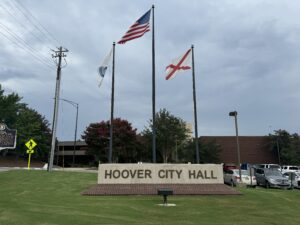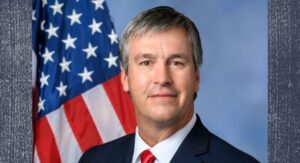Terri Sewell votes against bill aimed at reversing Dodd-Frank financial regulations

The U.S. House of Representatives voted Thursday to deliver on their promise to repeal Dodd-Frank — the sweeping set of financial regulations imposed on Wall Street that former President Barack Obama signed into law following the 2008 financial crisis. H.R. 10: the Financial CHOICE (Creating Hope and Opportunity for Investors, Consumers and Entrepreneurs) Act is intended to end taxpayer-funded bailouts of Wall Street banks and create more opportunities for Americans on Main Street, but the Alabama delegation’s sole Democrat, 7th District U.S. Rep. Terri Sewell, says the bill would actually “eliminate consumer protections designed to deter abuse by predatory lenders and large financial institutions.” “I voted against the Wrong CHOICE Act because it erases financial protections for American families and eliminates the safeguards enacted to protect against another financial crisis,” said Sewell. “In Alabama, we all remember the devastating impact the recession had on families in our communities.” Sewell continued, “Between the home foreclosures, rising unemployment, and the families whose dreams were stripped away to pay for Wall Street’s mistakes, it is hard to forget. It is unacceptable that only a decade later, Congress is rolling back key financial reforms enacted under the Obama Administration. We cannot go back to a time when predatory lenders and other bad actors abused consumers and brought our economy to the brink of collapse.” The remainder of the Alabama delegation voted in favor of the bill, which passed the House 233-186 along party lines.
Amazon to open $30 million Alabama ‘sortation center’
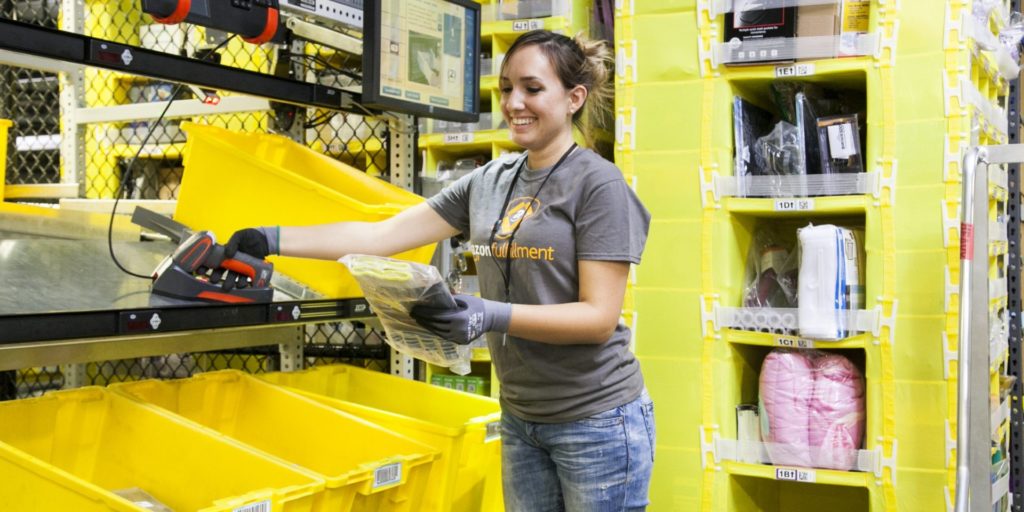
Amazon plans to invest nearly $30 million to open a 362,000-square-foot “sortation center” in Mobile, a facility that allows the Internet retail giant to accelerate deliveries of products purchased online. The Amazon center in west Mobile off Interstate 10 will ultimately employ more than 360 part-time employees, though that number could rise by 1,000 in busy periods. The site is expected to open later this year. “There are a lot of contributing factors that go into our thought process on where to place a new customer fulfillment or sortation center. Most importantly, we want to make sure our facilities are placed as close to the customer as possible to ensure we can offer a great Prime service and fast shipping speeds to customers,” said Ashley Robinson, strategic communications manager for Amazon. “We also look at the workforce and we’ve found great talent in abundance in Mobile County,” she added. Partnership approach The Mobile Area Chamber of Commerce teamed with the Alabama Department of Commerce, the Mobile County Commission and the City of Mobile to work on this project since early 2017. The center is a partnership between Amazon and Johnson Development Associates. “This will be the first Alabama hub for Amazon’s vast distribution network, and we will work with the Internet retailer and our allies in Mobile to develop a partnership that can lead to other opportunities over time,” said Greg Canfield, secretary of the Alabama Department of Commerce. “Having a world-class company like Amazon making a significant investment in Alabama is always a positive development,” he said. Troy Wayman, the Mobile Chamber’s vice president of economic development, said the Amazon project represents another example of how Mobile’s distribution infrastructure and workforce continue to draw the attention of an international company. “Amazon is one of the most successful and innovative companies in the world, and we could not be more excited to welcome their first major location in Alabama,” said Mayor Sandy Stimpson. “Mobile is open for business, and the best is yet to come.” Added Mobile County Commissioner Jerry Carl, “This helps America and the world know that Mobile is a great place to do business.” This story originally appeared on the Alabama Department of Commerce’s Made in Alabama website. Republished with permission of Alabama NewsCenter.
GE selects Auburn University for additive manufacturing program
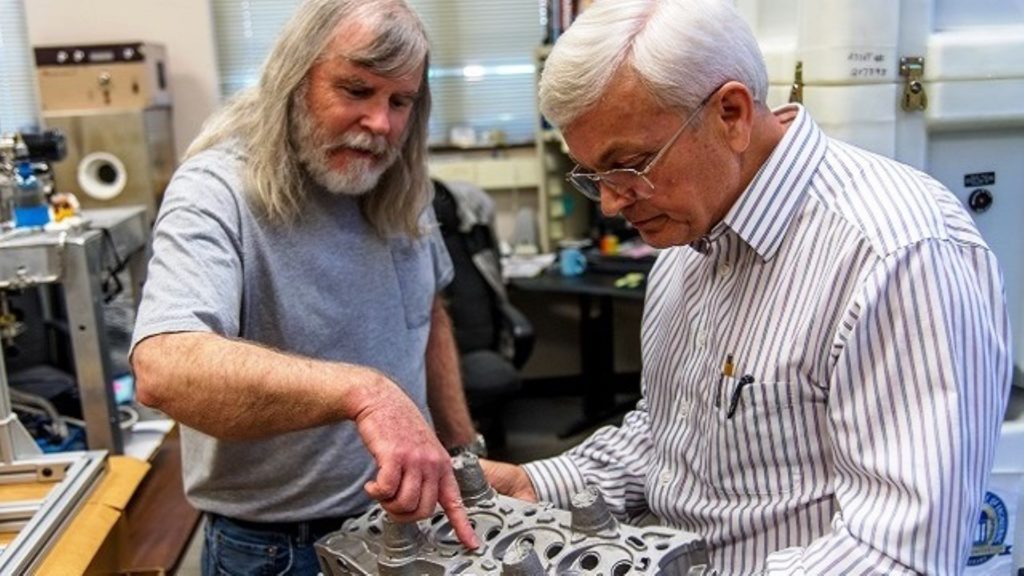
A leader in additive manufacturing technologies, GE, has selected Auburn University as one of just eight universities from around the world to participate in a groundbreaking program focusing on 3-D printing research and education initiatives. Auburn, which has been strategically expanding its activities in additive manufacturing, will receive a state-of-the-art Concept Laser MLAB 100R metal printer as part of the GE Additive Education Center. The printer is valued at $250,000. Manufacturers are increasingly using additive manufacturing to produce intricate metal components with complex geometries. (Contributed) “Auburn Engineering is a national leader in industrialized additive manufacturing,” said Christopher B. Roberts, dean of Auburn’s Samuel Ginn College of Engineering. “Companies such as GE have asked for our help in graduating engineers who are well versed in additive manufacturing and prepared to lead American industry into the future.” A GE advisory group composed of engineers and additive manufacturing specialists chose Auburn out of more than 250 applicants because of its established additive manufacturing curriculum and extensive research initiatives within the engineering school. GE’s Additive Education Program was created to support colleges and universities such as Auburn that are educating students in additive manufacturing technologies. Through the program, GE is investing $8 million over five years to provide up to 50 metal additive machines to higher education institutions around the world. “Additive manufacturing and 3-D printing is revolutionizing the way we think about designing and manufacturing products,” said Mohammad Ehteshami, vice president of GE Additive. “We want a pipeline of engineering talent that have additive in their DNA. This education program is our way of supporting that goal.” Leadership position Greg Canfield, secretary of the Alabama Department of Commerce, said Auburn’s concentration on additive manufacturing is positioning its engineering school as a leader in the game-changing technology. GE Aviation produces fuel nozzles using additive manufacturing at a plant in Auburn. (Contributed) “Additive manufacturing represents a significant breakthrough that will reshape how manufacturers produce all kinds of products, and it’s critical that Alabama’s workforce is prepared for this technology,” Canfield said. “The partnership between GE and Auburn University will help ensure that we’re ready for future advances,” he added. GE already has a strong presence in Auburn. Its GE Aviation unit is using additive manufacturing to mass produce fuel nozzle injectors at a plant in the city’s Technology Park West. The company says the nozzle is the first complex jet engine component produced with 3-D printing technology. Advancing additive Roberts said Auburn has moved to greatly expand its programs in additive manufacturing. An artist’s rendering shows the renovated Gavin Engineering Research Laboratory. When it opens later this year, the laboratory will feature dedicated space for Auburn University’s additive manufacturing research. (Contributed) “We responded by developing new curricula so students learn how to design for additive manufacturing systems,” he said. ‘We are also investing millions of dollars in the latest 3-D printing technology and hiring world-class faculty to teach our students. “This award further strengthens our relationship with GE, and we look forward to even greater collaboration with them in our education and research programs.” Auburn Engineering faculty members are also researching other ways to employ additive technology, such as producing next-generation rocket engines for space flights to Mars or developing intricate medical implants for use during surgery. In addition, Auburn has created a new Center for Industrialized Additive Manufacturing, directed by materials engineering professor Tony Overfelt, and hired internationally known faculty working in this growing field of research. The university’s newly renovated Gavin Engineering Research Laboratory opens later this year and will feature dedicated space for Auburn’s additive manufacturing research, including upgraded and expanded testing equipment. In addition, Auburn has signed a Space Act Agreement with NASA to jointly explore and advance the applications of 3-D printing technologies. How it works Additive manufacturing of metal parts is typically conducted using a laser or an electron beam to heat input materials during the printing process. (GE Additive) Additive manufacturing involves fabricating parts layer-by-layer from metals, plastics or other materials based on a 3-D computer-aided design model. Because parts are made by building upon each layer, additive technology reduces waste in the manufacturing process, improves production speed and can create parts that are lighter and more durable than those made using traditional manufacturing methods. With the ability to create highly complex parts in a fraction of the time, additive technology is revolutionizing the manufacturing industry and creating new opportunities for engineers to explore. GE Aviation says the fuel nozzle produced at its Auburn plant is 25 percent lighter and five times more durable than conventional models that took longer to produce. This story originally appeared on the Alabama Department of Commerce’s Made in Alabama website. Republished with permission of Alabama NewsCenter.
Energy Institute of Alabama honors state’s linemen
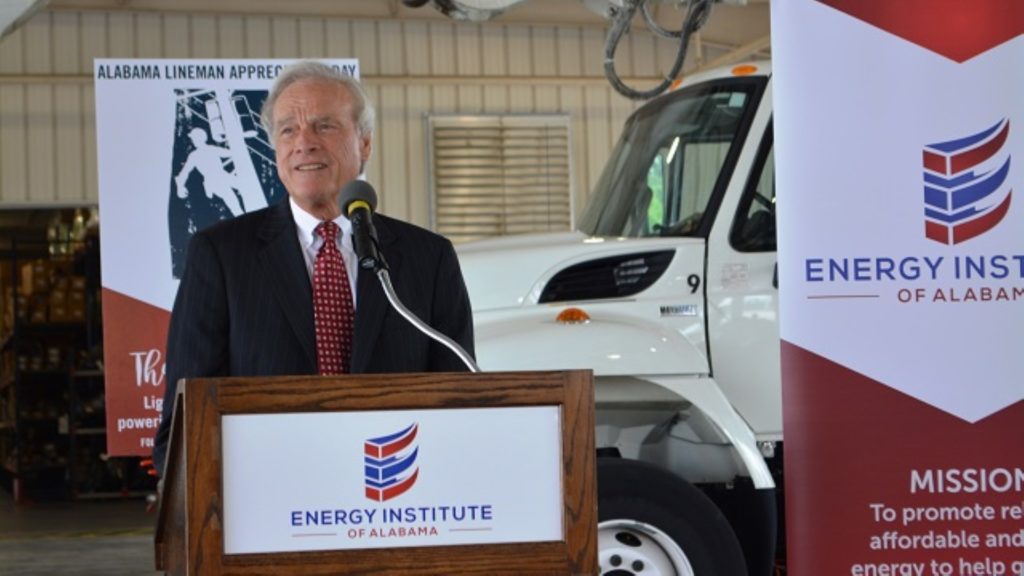
Linemen from a dozen electric companies and cooperatives from across the state gathered on Monday to celebrate Alabama Lineman Appreciation Day, hosted by the Energy Institute of Alabama at Dixie Electric Cooperative in Montgomery. “We’re doing something today that we need to do every day and that is to tell our linemen how much we appreciate what they do,” said Seth Hammett, EIA Chairman and PowerSouth Vice President of Business Development. Joining Hammett in honoring the linemen at the luncheon was Alabama Public Service Commission President Twinkle Cavanaugh and Commissioner Jeremy Oden and Alabama Emergency Management Director Art Faulkner. Baldwin EMC lineman David Hammock and Alabama Rural Electric Association of Cooperatives Safety Specialist Eric Turner, a former lineman, also addressed the crowd. “I’m with my co-workers more than I am my family sometimes,” Hammock said. “We are like a family. We watch each other’s backs and we are our brothers’ keepers. We also like to commend our families for giving up a lot for us to do our jobs.” Cavanaugh saluted the linemen, recalling how as a little girl she wished she had a pair of those “fancy shoes they put on that let them climb the poles so quickly.” Now, as PSC president, she told the workers on hand to remember, “Those guys and women in the fancy offices in management at your companies can’t do what you do.” Oden commended the linemen for cooperating when times are difficult after storms strike. “I love the way you work together. You are the front lines. Thank you for the risks you take getting our power back on.” Faulkner, who has been EMA director since 2011, said when a disaster strikes in the state, he has a lineman friend he relies on to gauge the severity of the crisis. “I use my ‘Lineman Index,’” he said. “I call my lineman friend and if he’s enjoying his day in his backyard, I know all is ‘green.’ If I call and I can barely hear him over the sound of his truck, I know he’s on the way to help and I know to go to ‘yellow alert.’ If I call and he doesn’t answer, I know it’s ‘red alert,’ because he is up in his truck helping his fellow linemen and he doesn’t have time to talk to me.” Lineman Appreciation Day was designated as the first Monday in June by the Alabama Legislature in 2014. There are more than 2,000 linemen working for the companies represented by the Energy Institute of Alabama: Alabama Power, PowerSouth, Electric Cities, the Tennessee Valley Authority and the electric cooperatives that are members of the Alabama Rural Electric Association and the Alabama Municipal Electric Authority. Republished with permission of Alabama NewsCenter.
James Comey’s secret release of Donald Trump memo draws criticism
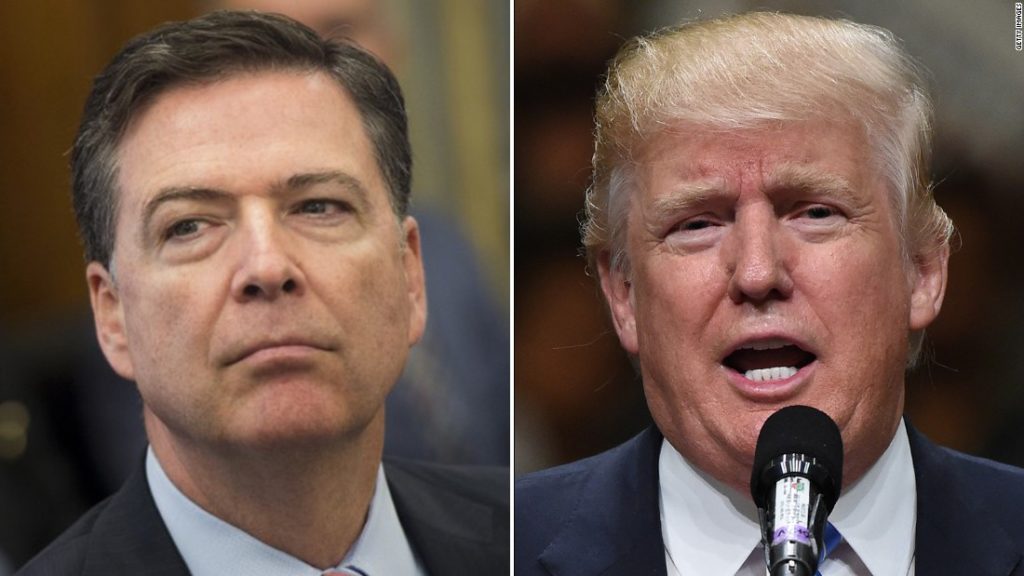
When former FBI Director James Comey revealed Thursday that he orchestrated a disclosure of damaging details about his conversations with President Donald Trump, he demonstrated his savvy use of media and his skills as a Washington operator. He also kicked up a hornet’s nest of questions about the legal and ethical implications of the move. Trump’s personal lawyer made Comey’s secret gambit a central piece of his defense of the president against the fired lawman’s testimony. Attorney Marc Kasowitz claimed Comey made “unauthorized disclosures” of privileged communications. He said he would leave it to the “appropriate authorities” to determine whether Comey’s plan should be investigated along with the leaks of material that have infuriated Trump. But Comey seemed unconcerned about that prospect when he acknowledged the move Thursday before a throng of cameras and a packed Senate intelligence committee hearing room. With vivid detail, he told the panel when the idea dawned on him – “in the middle of the night” – and what moved him to act. He said he was reacting to Trump’s cryptic tweet saying Comey better hope there are no tapes of their disputed conversations about the Russia investigation into election-season hacking. Comey said the president’s message convinced him he needed to get his account, detailed in contemporaneous memos, out quickly. “My judgment was, I needed to get that out into the public square. And so I asked a friend of mine to share the content of the memo with a reporter,” Comey testified. “I asked him to, because I thought that might prompt the appointment of a special counsel.” The friend, who was later identified as Columbia University law professor Daniel Richman, read part of the memo to a reporter from The New York Times, according to the newspaper. The paper reported Trump had asked Comey to drop the investigation into former national security adviser Michael Flynn. Kasowitz has denied that account, but he also argued that Comey’s move “unilaterally and surreptitiously made unauthorized disclosures to the press of privileged communications with the president.” He claimed that The New York Times quoted from the memo before Trump’s tweet, although that is not born out by the timeline. Trump issued his warning online on May 12, three days after Comey was fired and four days before the newspaper reported on the information in the memo, which was recounted by Comey associates. A special counsel was appointed the following week. Comey contended that the material was not classified or protected. Still, experts debated the legality of Comey’s secret back channel. Jonathan Turley, a law professor at George Washington University, suggested it was at minimum unprofessional and possibly unethical or even illegal. Turley contended that the memos were written in the style of the standardized forms agents use to summarize interviews, documents known as 302s, and were likely typed on an FBI computer and, therefore, could be considered government property. That would make stealing, selling or conveying it a crime, Turley said. “This doesn’t strike me as a daily diary,” Turley said. “You don’t keep your diary on an FBI computer and write passages during work hours about a work-related meeting. He knew he was preparing something that was evidentiary in nature.” Steven Aftergood, director of the Federation of American Scientists Project on Government Secrecy, disagreed. It’s hard to view the memo as government property, and it was shared, not lost or stolen, so it would not likely qualify as a crime, he said. And Comey discussed the contents of the memo in an open congressional hearing, which means the material he shared with his friend would not have been classified, Aftergood said. “At this point, Comey is not a government employee, and he is not under the direction of the president, and so I don’t see a legal or procedural bar,” Aftergood said. “He’s being totally above board about it, and if anybody wants to say that’s wrong, he is standing by his actions. If anybody wants to pursue him, he has made himself available, and that’s the most anyone can ask for.” Comey’s confirmation that he was behind the disclosure was not a shock to many in Washington. The lawman is known for understanding how to find the spotlight. He defied FBI norms by making public pronouncements about the investigation into Hillary Clinton’s use of a private email server, including during the campaign’s final days, drawing the ire of those who believe he tipped the electoral scales to Trump. That came nearly a decade after Comey, whom Trump recently derided as “a showboat,” first stepped onto the national stage with testimony about his hospital visit with the attorney general to prevent the reauthorization of a domestic surveillance program. That he would have another star turn came with little surprise, according to Tobe Berkovitz, a political media consultant who now teaches at Boston University. “He absolutely knows what levers to pull, when to pull them, how things are going to play,” said Berkovitz. “He’s very clear about his own image and persona and clearly revels in the media spotlight.” Republished with permission of The Associate Press.
James Comey testimony leaves question about Jeff Sessions unanswered
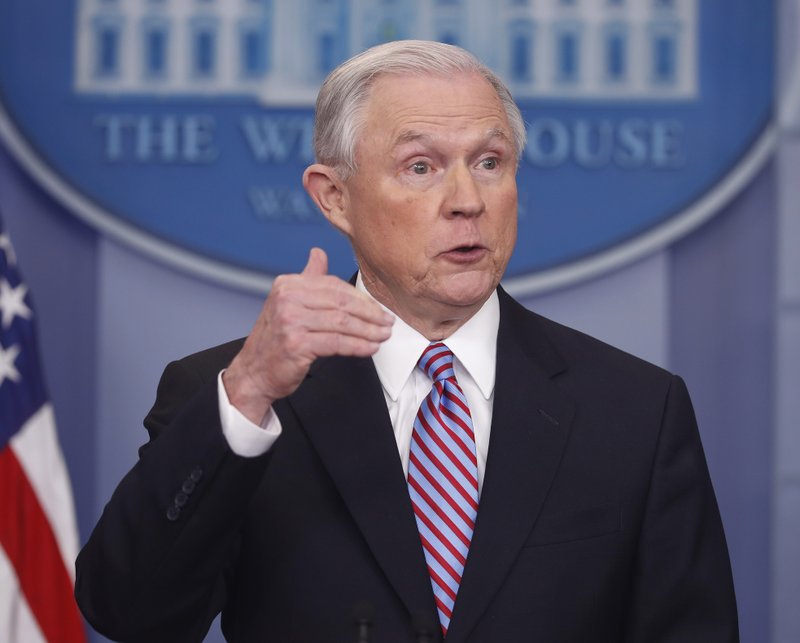
Ousted FBI Director James Comey provided a lot of answers during his public testimony before a Senate committee, but he left one substantial question unanswered: How did the FBI know Attorney General Jeff Sessions was going to step aside from the investigation into the Trump campaign’s Russia ties? The Justice Department responded late Thursday, saying that after consultations with department ethics officials Sessions recused himself because of his involvement in Trump’s 2016 presidential campaign, “for that reason, and that reason alone.” The department’s statement did not directly respond to Comey’s comment that he was “aware of facts” that would make Sessions’ continued involvement in the Russia probe problematic. Nor did it explain why Comey said he could not discuss those reasons in public. Comey testified that President Donald Trump had expressed hope he would end an FBI investigation into former national security adviser Michael Flynn. Comey said the request made him uncomfortable, but he chose not to relay that information to Sessions because he was convinced the attorney general would recuse himself from Russia-related matters. Career Justice Department officials had been recommending he step aside, Comey said. Sessions, a close Trump adviser, withdrew from the Russia investigation March 2 after acknowledging two previously undisclosed contacts with Russian Ambassador Sergey Kislyak last summer and fall. The Justice statement Thursday made no mention of that issue. Sens. Patrick Leahy, D-Vt., and Al Franken, D-Minn., last week released a letter urging the FBI to investigate whether Sessions had falsely testified under oath when he said at his January confirmation hearing that he hadn’t had any contacts with Russia. In addition to the two meetings that Sessions has acknowledged, the senators pointed to the possibility of a separate encounter at an April 2016 Trump campaign event that Sessions and Kislyak attended. The Justice Department has acknowledged that Sessions was at the Mayflower Hotel event in Washington, but said there were no private or side conversations that day. Comey’s statement resonated Thursday on Capitol Hill. Democratic lawmakers, some of whom were already concerned that Sessions’ involvement in Comey’s May 9 firing violated his recusal, said they would make it a top priority. The fact that information about Sessions was classified and Comey couldn’t answer “means there’s something out there that he knows about that the public doesn’t, and that he thinks bears on a need for Sessions to recuse himself in matters that relate to Russia,” said Sen. Sheldon Whitehouse, D-R.I. Sen. Ron Wyden, D-Ore., said he could “spend a lot of time on this in the days ahead.” Comey also said he didn’t know whether Sessions had violated the terms of his recusal, and that would depend on whether the reason for his firing was related to the Russia investigation. Justice Department spokesman Ian Prior said Sessions “has not been briefed on or participated in any investigation within the scope of his recusal.” Meanwhile Thursday, White House spokeswoman Sarah Huckabee Sanders said Trump “absolutely” has confidence in Sessions. The statement came two days after White House spokesman Sean Spicer declined to say whether Trump had confidence in his attorney general. Republished with permission of The Associate Press.
Daniel Sutter: Forget Paris
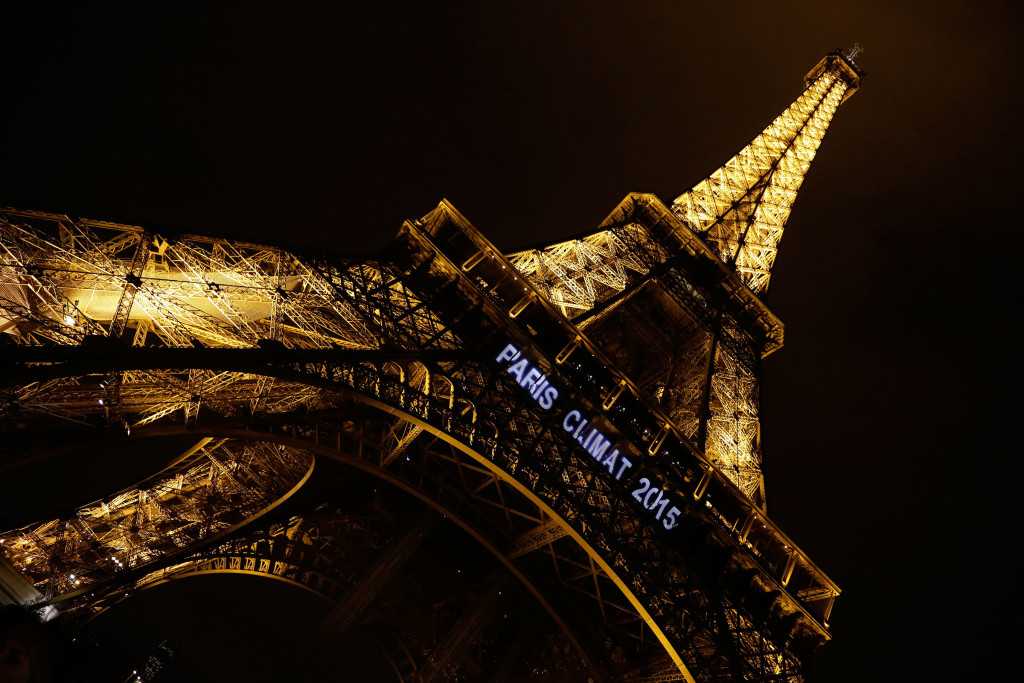
President Donald Trump announced the U.S. withdrawal from the Paris Climate Accord last week, setting off a firestorm of criticism. For instance, a New York Daily News headlined: “Trump to World: Drop Dead.” The withdrawal raises questions about global warming policies and their formulation. President Barack Obama and other world leaders signed the Paris Accord in December 2015. The U.S. and other developed nations promised greenhouse gas emissions cuts in the Accord. The Clean Power Plan, which significant restricts the use of coal, counts towards our promised efforts. Peoples’ responses to the withdrawal seem to depend largely on whether they believe that global warming will prove catastrophic. Warming due to greenhouse gases is not really in doubt; relevant questions involve how much warming will occur, the impacts of warming, and the viability of climate engineering to avoid or reverse warming. Despite the invective hurled at President Trump, the Paris Accord would have done very little to prevent catastrophic global warming. If every nation had delivered as promised (a big if), the Accord would have prevented about 0.2 degrees Celsius warming by 2100 according to leading climate models. The math of atmospheric carbon dioxide concentrations is pretty clear: achieving the recommended targets will take a lot more than driving electric cars. Basically, we would need to stop using fossil fuels by mid-century, bringing almost unimaginable changes to our economy and lives. On the other hand, people who don’t see global warming as a dire threat look forward to Mr. Trump soon voiding the Clean Power Plan. Such a celebration might be premature. The Environmental Protection Agency (EPA) might be committed to the Plan despite the Paris exit. Why? In 2007, the U.S. Supreme Court ruled in Massachusetts v. E.P.A. that the Clean Air Act provided legal authority to regulate carbon dioxide emissions, if the EPA determined that greenhouse gases endangered the environment. In 2009, President Obama’s EPA issued this endangerment finding. As Cato Institute’s Patrick Michaels argued at the recent 12th International Conference on Climate Change, the endangerment finding likely compels implementation of the Clean Power Plan. The process behind imposing these policies is, I think, highly troubling. A lawsuit by environmental groups and sympathetic state attorneys general yielded the 2007 Supreme Court decision. Regulatory actions by the EPA produced the endangerment finding and Clean Power Plan. And finally, we had an international agreement never ratified by the Senate. The process further relied on technicalities and a limitation of the Clean Air Act. The Act requires reduction of pollution to safe levels regardless of cost, and without considering whether we might more easily live with pollution. And yet adaption to a warmer climate is a potential response to global warming. The Clean Air Act gives the EPA authority to regulate “any air pollutant” endangering human well-being. Calling carbon dioxide, which is necessary for life, pollution stretches the plain meaning of the word. Limited government undertakes only those tasks citizens authorize. Meaningful limits require narrowly authorized tasks. Air pollution caused by cars and factories differs markedly from global warming. Action to address global warming should require explicit authorization by citizens. The cap-and-trade proposal of 2010 sought such approval, but failed in the Senate. The Paris Accord was never submitted to the Senate. Enacting the costliest environmental program ever contemplated without approval by our elected representatives is inconsistent with democracy and limited government. Global warming activists interpreted cap-and-trade’s failure as evidence of special interests choking the democratic process. Yet evidence weighs against this interpretation. A 2015 Gallup poll, for instance, found that only 32 percent of Americans worried a great deal about climate change, the same percentage as in 1989. If you doubt such polls, then ask if you or people you know would be willing to give up cars, airplanes, air conditioning and computers over global warming. Our system trusts that Americans have the intelligence and character to determine what is in our best interests. Many Americans are not willing to spend trillions of dollars combatting global warming. We may be wrong, but imposing incredibly costly policies against our wishes is un-American. ••• Daniel Sutter is the Charles G. Koch Professor of Economics with the Manuel H. Johnson Center for Political Economy at Troy University and host of Econversations on TrojanVision. The opinions expressed in this column are the author’s and do not necessarily reflect the views of Troy University.

